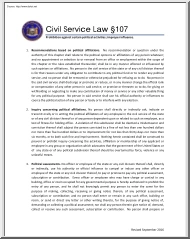Comments
No comments yet. You can be the first!
What did others read after this?
Content extract
Source: http://doksi.net A Condensed History of American Agriculture 1776–1999 1776–99 1800 1810 1820 1830 1840 1850 1860 1870 1880 1890 1785 The Philadelphia Society for the Promotion of Agriculture and other agricultural groups organized 1802 George Washington Parke Custis instituted agricultural fair in Arlington, VA 1810 First American agricultural periodical, the Agricultural Museum, began publication 1820 Agriculture Committee, U.S House of Representatives, established 1834 McCormick reaper patented 1840’s The growing use of factory-made agricultural machinery increased farmer’s need for cash and encouraged commercial farming 1850’s Commercial corn and wheat belts began to develop 1862 U.S Department of Agriculture established 1874 Availability of barbed wire allowed fencing of rangeland, ending era of unrestricted, openrange grazing 1887 Hatch Experiment Station Act set up Federal-State cooperation in agricultural research 1890 Second Morrill Act
broadened land -grant program and set up funding for black land-grant schools 1825 Agriculture Committee, U.S Senate, established 1793 Invention of cotton gin 1862 The drive for agricultural education culminated in the passage of the Morrill Land Grant College Act 1890 Census showed that the frontier settlement era was over 1890 First Federal Meat Inspection Act 1862 Homestead Act gave free public land to persons willing to farm it A D D E US ECT P S IN 1896 Rural Free Delivery (RFD) started 1865-70 The sharecropping system in the South replaced the old slave plantation system 1900 1910 1920 1930 1940 1950 1960 1970 1980 1990–99 1900-1910 George Washington Carver, director of agricultural research at Tuskegee Institute, pioneered in finding new uses for peanuts, sweet potatoes, and soybeans, thus helping to diversify southern agriculture. 1914 Smith-Lever Extension Act passed setting up a national extension service 1922 Capper-Volstead Act gave cooperatives legal
standing 1932-36 Drought and dust-bowl conditions developed 1945-70 Revolution in agricultural technology brought greatly increased yields and more specialized, capital-intensive farms 1954 Agricultural Trade Development and Assistance Act (P.L 480) facilitated agricultural exports and foreign aid 1964 Food Stamp Act and War on Poverty 1970 Environmental Quality Improvement Act 1980’s Biotechnology became a viable technique for improving crop and livestock products 1990 Food, Agriculture, Conservation, and Trade Act and Omnibus Budget Reconciliation Act increased farmers’ flexibility in planting under government programs 1902 Reclamation Act facilitated irrigation 1906 Food and Drug Act, a landmark in food safety 1908 President Roosevelt’s Country Life Commission was established and focused attention on rural problems 1933 Agricultural Adjustment Act (AAA) initiated crop and marketing controls 1936 Soil Conservation and Domestic Allotment Act linked farm programs with
conservation 1936 Rural Electrification Act (REA) greatly improved quality of rural life 1946 National School Lunch Act 1947 General Agreement on Tariffs and Trade (GATT) established working procedures that substantially reduced tariffs between member nations 1954-55 Rural development program begins 1956 Soil Bank Program authorized 1985 Food Security Act lowered government farm supports, promoted exports, and set up the Conservation Reserve Program 1993 Revised General Agreement on Tariffs and Trade (GATT) and new North American Free Trade Agreement (NAFTA) lowered trade barriers 1996 Federal Agriculture Improvement and Reform Act revised farm programs to increase reliance on market signals 1997 USDA issues Civil Rights Action Team report, offering 92 recommendations for overcoming past injustices 1998 HACCP is implemented to target and reduce the presence of pathogens in meat and poultry 1999 Drop in many commodities prices, combined with disastrous weather in many parts of the
country, caused increased demand for USDA farm programs 1999 The "Roadless Initiative" is implemented to preserve roadless tracts in National Forests, securing fish and wildlife habitat and protecting natural resources
broadened land -grant program and set up funding for black land-grant schools 1825 Agriculture Committee, U.S Senate, established 1793 Invention of cotton gin 1862 The drive for agricultural education culminated in the passage of the Morrill Land Grant College Act 1890 Census showed that the frontier settlement era was over 1890 First Federal Meat Inspection Act 1862 Homestead Act gave free public land to persons willing to farm it A D D E US ECT P S IN 1896 Rural Free Delivery (RFD) started 1865-70 The sharecropping system in the South replaced the old slave plantation system 1900 1910 1920 1930 1940 1950 1960 1970 1980 1990–99 1900-1910 George Washington Carver, director of agricultural research at Tuskegee Institute, pioneered in finding new uses for peanuts, sweet potatoes, and soybeans, thus helping to diversify southern agriculture. 1914 Smith-Lever Extension Act passed setting up a national extension service 1922 Capper-Volstead Act gave cooperatives legal
standing 1932-36 Drought and dust-bowl conditions developed 1945-70 Revolution in agricultural technology brought greatly increased yields and more specialized, capital-intensive farms 1954 Agricultural Trade Development and Assistance Act (P.L 480) facilitated agricultural exports and foreign aid 1964 Food Stamp Act and War on Poverty 1970 Environmental Quality Improvement Act 1980’s Biotechnology became a viable technique for improving crop and livestock products 1990 Food, Agriculture, Conservation, and Trade Act and Omnibus Budget Reconciliation Act increased farmers’ flexibility in planting under government programs 1902 Reclamation Act facilitated irrigation 1906 Food and Drug Act, a landmark in food safety 1908 President Roosevelt’s Country Life Commission was established and focused attention on rural problems 1933 Agricultural Adjustment Act (AAA) initiated crop and marketing controls 1936 Soil Conservation and Domestic Allotment Act linked farm programs with
conservation 1936 Rural Electrification Act (REA) greatly improved quality of rural life 1946 National School Lunch Act 1947 General Agreement on Tariffs and Trade (GATT) established working procedures that substantially reduced tariffs between member nations 1954-55 Rural development program begins 1956 Soil Bank Program authorized 1985 Food Security Act lowered government farm supports, promoted exports, and set up the Conservation Reserve Program 1993 Revised General Agreement on Tariffs and Trade (GATT) and new North American Free Trade Agreement (NAFTA) lowered trade barriers 1996 Federal Agriculture Improvement and Reform Act revised farm programs to increase reliance on market signals 1997 USDA issues Civil Rights Action Team report, offering 92 recommendations for overcoming past injustices 1998 HACCP is implemented to target and reduce the presence of pathogens in meat and poultry 1999 Drop in many commodities prices, combined with disastrous weather in many parts of the
country, caused increased demand for USDA farm programs 1999 The "Roadless Initiative" is implemented to preserve roadless tracts in National Forests, securing fish and wildlife habitat and protecting natural resources





